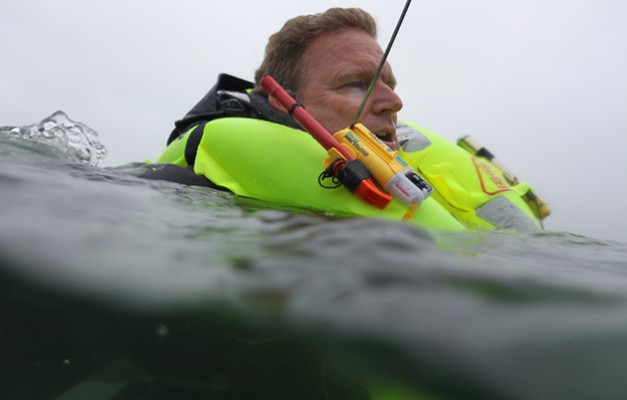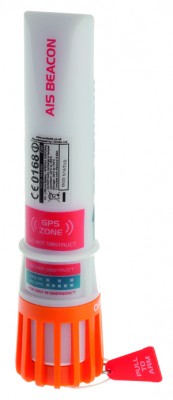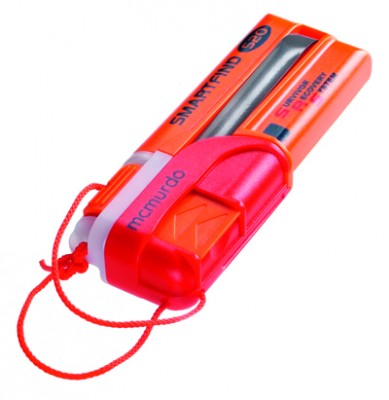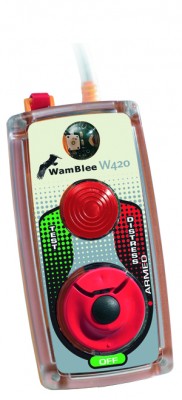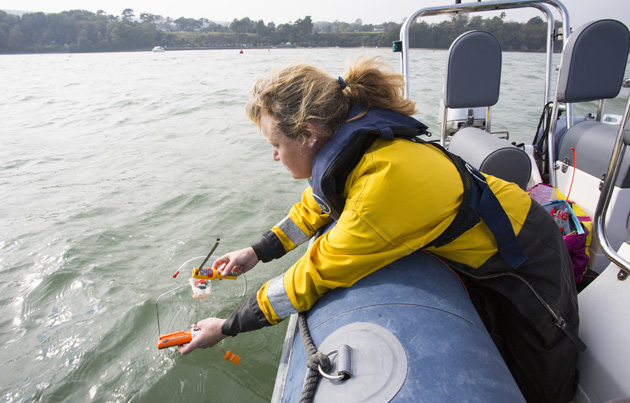These AIS MOB devices can alert your yacht, and others close by, to a man overboard. Pip Hare tests a selection of the latest models and considers the search and rescue options
Tested: AIS MOB devices – help your crew to save your life if you should go overboard
He pointed his finger at the audience of sailors and very firmly told us that we were the best chance our co-skipper had of being recovered after falling over the side and that we must ensure our counterparts were wearing the correct safety equipment when on deck. He also stressed how important it was that we both had tested and were aware of how to use our AIS locator devices.
 With the prevalence of these devices increasing and many sailors now making a choice between an AIS location device and a PLB, I gathered together seven AIS MOB devices and compared their key features to understand what each one could offer, how they perform and how AIS fits into the search and rescue safety package.
With the prevalence of these devices increasing and many sailors now making a choice between an AIS location device and a PLB, I gathered together seven AIS MOB devices and compared their key features to understand what each one could offer, how they perform and how AIS fits into the search and rescue safety package.
Who’s it for?
It is generally accepted that for those sailing alone a more traditional personal PLB EPIRB, which operates on 406MHz, remains your best chance of being found in an MOB situation. For the majority, however, who sail on a crewed yacht an AIS device, such as the ones we tested, allows both the mothership and nearby vessels to identify your exact location using an AIS set or chartplotter.
Devices tested
McMurdo Smartfind S10 – rated 8/10
The first of its kind, produced in 2011, this was originally aimed at divers hence is waterproof to 60m. It has an integral antenna housed in the waterproof casing, which illuminates when the device is activated.
£238
McMurdo Smartfind S20/Kannad Safelink R10 – rated 8/10
These are the same units produced by the two Oriola brands. They are small, and offer automatic in-lifejacket activation. These are the current brand leaders in personal AIS devices.
£179.95
WamBlee RescueMe 420–LP – rated 7/10
This water-activated unit is designed to fit inside a lifejacket. It has an antenna housed in plastic tubing that fits around the collar of the lifejacket and does not need deploying prior to activation.
£264
OceanSignal RescueMe MOB1 – rated 9/10
Despite being the smallest of all current models on the market, the RescueMe MOB1 also incorporates a DSC function. The device is designed to fit inside a lifejacket.
£209
AMEC TB-520 – rated 7/10
This is a new device produced in Taiwan that is due to be launched in January at the London Boat Show. It offers automatic activation and has bright LED lights in the housing, which flash the SOS message when the unit is activated.
£210
WeatherDock AG – easyONE – rated 8/10
 The easyONE is an entirely water-activated device that floats with its antenna facing up. It could be either kept in a pocket or tucked inside a lifejacket with no fitting or arming required.
The easyONE is an entirely water-activated device that floats with its antenna facing up. It could be either kept in a pocket or tucked inside a lifejacket with no fitting or arming required.
£220
WeatherDock AG – easyRESCUEpro – rated 7/10
 This is the largest, heaviest and most expensive of all of the devices tested; the easyRESCUEpro can double as a liferaft SART, and incorporates a GMDSS-approved DSC alerting function.
This is the largest, heaviest and most expensive of all of the devices tested; the easyRESCUEpro can double as a liferaft SART, and incorporates a GMDSS-approved DSC alerting function.
The easyRESCUEpro does stand apart from the rest at £557, but this is down to its extra DSC functionality and ability to double up as a liferaft SART with extended battery transmission time.
£557
Fitting
All the devices fit inside a lifejacket, although some not quite as unobtrusively as others. Fitting options varied across the range, including belt loops, pouches or oral inflation tube clips.
All the oral inflation tube clips were firm and easy to fit, with the exception of the Wamblee, which uses an angular stainless steel bracket that I found fiddly. If choosing the Wamblee I feel the belt loop option is better; it comes with both.
The units with clips or belt loops can also be fitted inside a lifejacket to a suitable strop. Not all lifejackets will have these. Ocean Safety now includes a strop as standard in its Kru Sport Pro jackets, but it would be a good idea to look inside your lifejacket or talk to a service agent before taking up this option.
A small design feature that made a big difference was the addition of teeth on the McMurdo and Kannad belt clip. The teeth gripped the webbing strop firmly and kept the unit exactly in place even during automatic inflation. The clip without teeth on the AMEC unit, however, slid off the side of the bladder during activation.
The two Weatherdock and the McMurdo S10 devices are larger and can be tucked inside a lifejacket cover with the lanyard attached. They all fitted, but left bulky profiles and I definitely felt the weight of the easyRESCUEpro.
Belt loops and pouches enable a wearer to attach the devices outside the lifejacket. If attached at the waist or hip, however, they would be fully submerged if you fell in the water and unable to transmit. Units correctly fitted inside the lifejackets are already in the ideal position for transmission as soon as the jackets are inflated.
Not all the devices floated. Although the Kannad and McMurdo come with a floating pouch, this can only be used when the AIS device is dormant. Once transmitting, the GPS area must be kept clear so it cannot be put back in the pouch. The easyONE floats upright with the antenna pointing at the sky. This means that, however you carry it, it will always float to the surface and transmit. The AMEC floats, but not antenna up.
Automatic activation
There are two ways for devices to activate automatically: one is with water contact and the other is via a pull-string when the lifejacket itself goes off. For the test results I have labelled devices as partially automatic if they require arming to ensure activation.
The pull-to-activate mechanisms rely on a lanyard attached from device to lifejacket, which when put under tension by the bladder inflating, will pull away, releasing the antenna and activating the device.
Kannad, McMurdo, AMEC and Ocean Signal all use this system of activation. They recommend set up by an approved lifejacket service agent. Trial and error enabled me to find the right lanyard length; across the board the jackets needed to be firmly under pressure to get the devices to activate.
When jumping into the water wearing an auto-inflate lifejacket the results for the Kannad/McMurdo were impressive; by the time I had resurfaced, my lifejacket was inflated and the locator device was resting on top of the bladder, antenna pointing at the sky and LEDs flashing. The AMEC auto-activated well, but I had to reposition it to the top of the lifejacket bladder once in the water.
Water-activated devices rely on immersion to make an electrical connection across two contact points. The WamBlee and AMEC need arming to ensure automatic activation and both the Weatherdock units are fully automatic without arming.
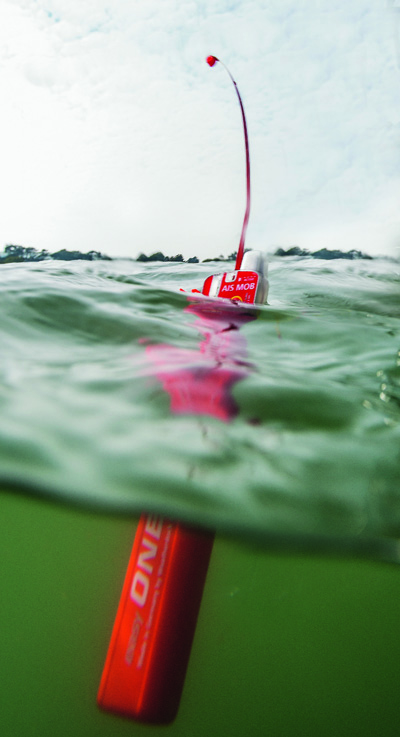 The easyONE has a neat system using a dissolvable salt tablet to deploy the antenna. When tested in my sink, the force of the antenna escaping scattered bits of salt tablet half way across the room. It’s clever, but I wouldn’t recommend having it near your face during activation.
The easyONE has a neat system using a dissolvable salt tablet to deploy the antenna. When tested in my sink, the force of the antenna escaping scattered bits of salt tablet half way across the room. It’s clever, but I wouldn’t recommend having it near your face during activation.
Those of us who get regularly very wet when sailing might shy away from water-activated units. I am sure if accidentally activated inside your lifejacket there is little chance a signal would escape, however repeated activation may affect battery life.
The only device that cannot be automatically activated is the McMurdo S10.
A surprising range
I made several tests on the range of each device and in different circumstances and found little notable difference between units. Within the harbour, devices set off at water level were not detected at a range of half a mile from a receiving aerial at mast height. Along a cliff line this range was up to a mile, and over a sandy headland the signal was lost at two miles.
On open water the results for all sets were astoundingly good. I tested up to three-and-a-half miles with the AIS devices in the water and the receiving aerial at just over 14m high. On all occasions all sets continued to produce strong and regular updated information to the receiving AIS plotter at intervals of less than one minute.
Watching from my man overboard position with the devices at water level, the yacht with the receiver was no longer visible from two miles away.
I had expected to see some variance in the performance across the devices in this area, however all sets performed well enough to save your life. These tests were picked up by other passing vessels and also showed up on the marine traffic website.




